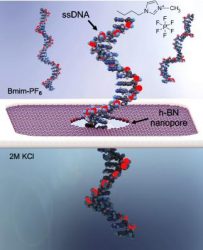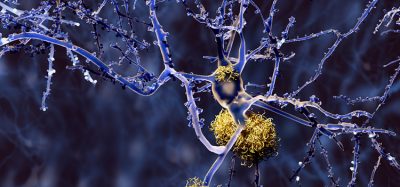Novel nanopore platform developed to sequence DNA
Posted: 30 April 2021 | Victoria Rees (Drug Target Review) | No comments yet
Scientists have created a new nanopore sequencing platform that can detect the presence of the nucleobases of DNA.


Researchers at the University of Texas at Dallas, US, have developed a nanopore sequencing platform that, for the first time, can detect the presence of nucleobases, the building blocks of DNA and RNA.
According to the scientists, nanopore technology shows promise for the development of small, portable, inexpensive devices that can sequence DNA in real time. One of the challenges, however, has been to make the technology more accurate.
“By enabling us to detect the presence of nucleobases, our platform can help improve the sensitivity of nanopore sequencing,” said Dr Moon Kim, lead researcher of the study.
Currently, most DNA sequencing is done through a process that involves preparing samples in the lab with fluorescent dye and using lasers to determine the sequence of the four nucleobases: adenine (A), cytosine (C), guanine (G) and thymine (T). Each nucleobase emits a different wavelength when illuminated, allowing scientists to determine the sequence.


In this illustration, a single-stranded DNA molecule moves through a nanopore. The nanopore is about 2 nanometres (nm) in diameter. By comparison, a strand of human hair is 80,000 to 100,000 nm wide. A water shell (blue) surrounds the DNA strand [credit: University of Texas at Dallas].
In nanopore sequencing, a DNA sample is uncoiled and the hairlike strand is fed through a tiny hole, or nanopore, typically in a fabricated membrane. As it moves through the nanopore, the DNA strand disturbs the electrical current flowing through the membrane. The current responds differently based on the characteristics of a DNA molecule, such as its size and shape.
“The electrical signal changes as the DNA moves through the nanopore,” Kim said. “We can read the characteristics of the DNA by monitoring the signal.”
One of the challenges in advancing nanopore sequencing has been the difficulty of controlling the speed of the DNA strand as it moves through the nanopore. The team’s research focused on addressing that by fabricating an atomically thin solid-state – or non-biological – membrane coated with titanium dioxide, water and an ionic liquid to slow the speed of the molecules through the membrane. The water was added to the liquid solution to amplify the electrical signals, making them easier to read.
“By enabling us to detect the presence of nucleobases, our platform can help improve the sensitivity of nanopore sequencing,” said Kim.
The next step for researchers will be to advance the platform to identity each nucleobase more quickly.
“The ultimate goal is to have a hand-held DNA sequencing device that is fast, accurate and can be used anywhere,” Kim said. “This would reduce the cost of DNA sequencing and make it more accessible.”
The study was published in Electrophoresis.
Related topics
Disease Research, DNA, Next-Generation Sequencing (NGS), RNAs, Sequencing
Related organisations
University of Texas at Dallas
Related people
Dr Moon Kim








